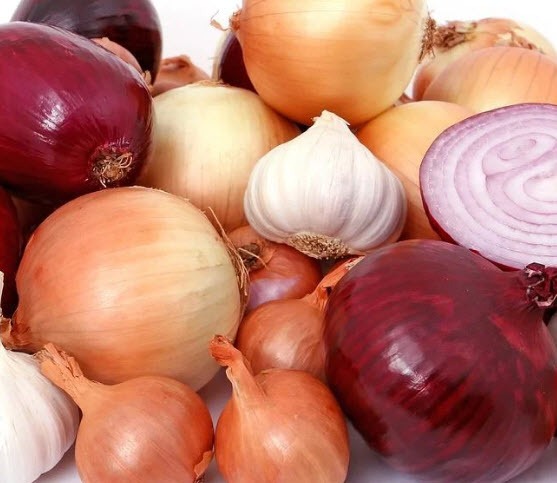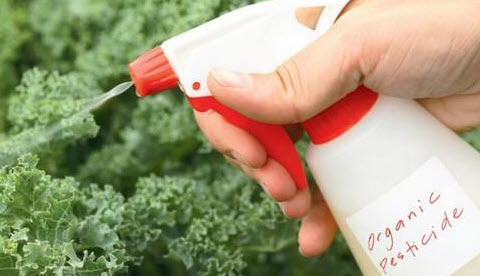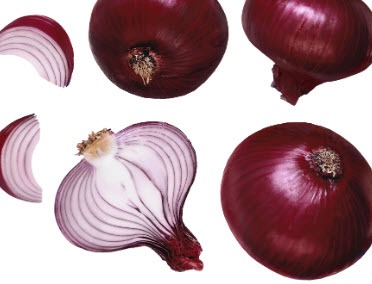Story of Day :
Onions are one of the most commonly used spices in almost every dish, and for a good reason. Their mild flavor lets you add a bit of sweetness to dishes without overpowering them.

Onions also help create an environment that is not so hospitable for pests like aphids and spider mites.
They contain some compounds such as quercetin, which research suggests can help prevent pests from laying eggs on plants and reduce their population by half.
Not only that, but they also have larger benefits for your garden than you may think. Here are the benefits of onions for your garden you should be aware of.
Contents
The Benefits of White Onion (Garlic) for Plants
Garlic is one of the cheap organic farming weapons but has many benefits.
In this article, we will explain the essential things about garlic for plants:
First, I will explain the benefits of garlic as a pesticide for plants.
Second, how to make a recipe with garlic’s main ingredient so it can be used for plants.
The next thing you need to know is how to properly use garlic as a pesticide so that it doesn’t backfire on your plants due to misuse or abuse.
This often happens for beginners who spray garlic on plants with the wrong dose, so the plants wilt and eventually die.
Benefits of White Onion (Garlic) for Plants as an Organic Pesticide

The first benefit of garlic is as an organic pesticide (it can be used as an organic insecticide to kill insects and can also be used as an organic fungicide as an anti-fungal or fungus repellent).
Garlic as an insect repellent can repel mealybugs or other leaf-destroying insects.
As a natural fungicide, garlic is perfect for eradicating fungus because it contains active sulfur compounds.
Furthermore, garlic is also helpful as a natural anti-nematode for plants.
Nematodes are worms that eat away at plant roots. This can cause the plant’s roots to be amputated, so it can cause the plant to get sick or die.
How to Make White Onion (Garlic) Pesticide
Materials needed
- 2 glasses of water.
- Garlic 2 cloves.
- Organic liquid soap 1 or 2 drops of any brand (try to choose one that is low in potassium). High potassium levels can burn plants. The function of liquid soap is to even out the mixture.
- Vegetable oil or can also use Neem Oil (better) as much as half a teaspoon to strengthen the power of organic pesticides.
How to make
- As a first step, mix half a glass of water with garlic. Blend the garlic that has been mixed with water. This is intended to make the mixture smoother.
- Next, add 1.5 cups of water to the blender. Continue by blending the garlic that has been added with 1.5 cups of water.
- At this point, the mixture consists only of garlic and water. Store the mixture in a closed container (bottle).
- Before use, store the mixture of garlic and water in a bottle in a dark place for one day. This is so that fermentation occurs in the mixture.
- If this mixture is still left after use, you can store it in the refrigerator for a certain period.
How to use
- Pour the garlic mixture from the bottle into a larger container. Next, give 1 or 2 drops of organic liquid soap into the container (remember, not too much). Next, add half a teaspoon of vegetable oil or Neem Oil.
- Stir the mixture with a mixer until smooth.
- For use, you can directly put organic pesticide liquid into the pesticide sprayer. When placing the mixture into a plant sprayer, you can use a sieve; this is meant to filter out the garlic that has not been finely ground.
How to Use Organic Pesticides Safely
Organic pesticides need to be used appropriately.
Things to consider when using organic pesticides are as follows:
- Use organic pesticides in the right amount. Plants affected by pests can use pesticides once a week. If the attack is severe, you can apply the pesticide 2 or 3 times a week (no more). As for prevention, you can use organic pesticides once every 2 weeks.
- Avoid sunlight when applying pesticides. The exact time is around 6 am or after 5 pm. This is so that the plants do not burn or wilt when given.
- Spray on affected leaves or stems. If pests or nematodes attack the roots, you can water them directly into the soil or plant roots.
- Do not overuse organic liquid soap. Remember only 1 or 2 drops according to the dose described previously. Too much can cause the plant to wilt and even die.
- Observe the condition of the plants after applying pesticides. This is because the response power of each plant is different. Do the initial spraying on one or two leaves first or on certain parts of the plant. See the results one day later. If the results do not match, you can dilute or reduce the frequency of use.
Also, read about how to make organic pesticides.
The Benefits of Red Onion for Plants
Shallots have body parts, including skin, that can benefit plants.
Here are 10 benefits of red onion for plants:
- Increase plant growth and development.
- Increase the synthesis of chlorophyll, carbohydrates, minerals, and plant enzymes.
- Encourage flowering and fruiting plants.
- Prevents flower and fruit loss.
- Increase crop yields.
- Improve the quality of crop yields.
- Increase plant resistance.
- Contains auxin, which contains body stimulant substances.
- Functions as a vegetable pesticide.
- As organic fertilizer for plants.
How to use Red Onions for Plants

You can utilize onion skin as a natural plant mulch. Shallot skin is rich in nutrients, so it is excellent to use as a natural plant mulch. You can put (sprinkle) a bunch of onion peels on top of the soil layer of your plant. It helps prevent weeds, maintains moisture, and can be a natural pesticide.
The peeled red onion skin can be used as a compost mixture to add nutrients and as a pesticide. However, if your compost uses earthworms, you should not use shallots because it will hinder the function of earthworms in forming compost.
You can utilize shallots as liquid organic fertilizer. The way to mix it is to add 1 ounce (100 grams) of onion skin (can be with the meat) mixed with 500 ml-1000 ml of water. Cover the onion and water mixture tightly, then let it sit for 24 hours (no need to blend or juice). How to use, mix again the liquid containing the onion with water (diluted) in a ratio of 1:1 to 1:5. In addition to water, you can also use water from washing rice. How to give is by spraying or directly watered on the plant.
As a strong organic pesticide, you can make a mixture of 5 shallots, 5 cloves of garlic, and 5 red chilies. You can blend all ingredients and then put them in a bowl. Next, add about 2-3 cups of water. Then close the container and leave for 24 hours for fermentation to occur. To use, dilute the liquid onion and chili with water in a ratio of 1:5. To treat fungal or insect attacks, spray organic pesticides on plants 1 or 2 times a week. For prevention, spray organic pesticides every 2 or 3 weeks.
Shallots as a root growth stimulant. Mix sliced onion (1 piece), half or quarter teaspoon of cinnamon, and one cup of water. Next, add about half or a handful of aloe vera gel. Stir the mixture in the glass. How to use it place (soak) the stem cuttings to be planted in the mixture for 30 – 60 minutes.